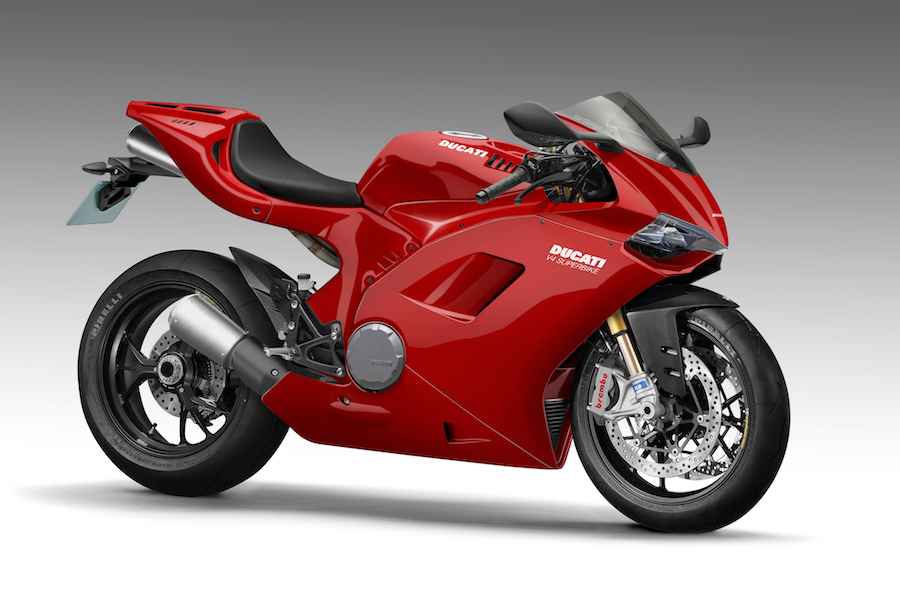Race boss talks about ‘secret’ new MotoGP-derived WSBK contender
The ongoing saga of Ducati’s forthcoming V4-powered road-going superbike is sure to be the new-bike story of 2017, and now the firm’s sporting director Paolo Ciabatti has dropped more tantalising hints about it.
Speaking to AMCN’s Gordon Ritchie at the Imola WSBK round, Ciabatti confirmed the new bike will be powered by a variation of the latest Desmosedici MotoGP engine.
“There is not much I can say about this, honestly, but it is a kind of evolution of the plan for sportsbikes for Ducati,” he said.
“Developing a new engine for MotoGP in 2015 – which is what we are still using with some modifications and updates – was a good base for a production engine.
“The project is there and you do not have to design a brand-new engine. You just need to make that concept work into a production engine.
“About when we will race it, I can only tell you that next year we will race the Panigale.”
The Desmosedici’s engine was designed in 2015 and was the first all-new engine used by the Italian company in MotoGP since it entered the class in 2003.
As before, it’s a 90º V4 but, unlike the previous Desmosedici – and the Desmosedici RR roadbike – it’s more compact and rotated backwards to sit in a more conventional V4 position, rather than adopting the firm’s traditional L-type configuration.
The valves are operated by the desmodromic system rather than using conventional springs, and are closed with mechanical rockers. That makes the GP engine more suitable than most for conversion into a road unit.
The big question over the roadbike remains whether it will be a straight MotoGP replica, like the old Desmosedici RR and Honda’s RC213V-S, or whether Ducati will instead give it a dose of its traditionally beautiful but avant-garde styling. Expect the latter given that this will be a mass-produced model, priced below the €40,000 (A$60,000) limit for WSBK homologation.
Initially at least, the V4 is likely to be a supplementary model rather than a straight replacement for the 1299 V-twin Panigale, which needs to be updated to meet Euro 4 rules (as its 959 Panigale sibling has already done), but Ducati might not want to desert its legions of V-twin-loving fans in a single stroke.
By Ben Purvis

The new V4 will go straight to the top of the Ducati range, but doesn’t mean
the end for its V-twins